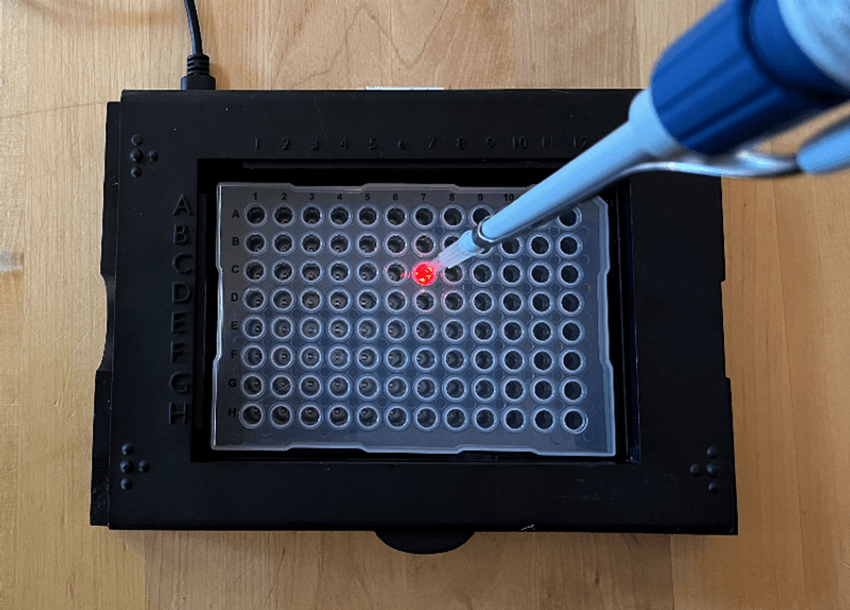Researchers find confidence in their 96-well workflows with easy-to-use, responsive pipette tracking.
In a fast-paced laboratory, even the smallest pipetting errors can ruin an entire experiment. For researchers who are familiar with the focus needed to fill a 96-well plate, whether running a qPCR, preparing an ELISA, or setting up a multiwell culture for minimum inhibitory concentration or biofilm assays, The Well-Watcher from Labrat d’Or is an innovative solution that addresses common mistakes such as missing a well or double pipetting.
“The purpose of The Well-Watcher is to eliminate a costly but very common problem for life science researchers, of not knowing what well they’ve already pipetted reagents into,” said Jeroen De Buck, University of Calgary professor and Labrat d’Or founder. “It’s invented by scientists and it’s for scientists. It comes out of real frustrations in the lab… this feeling of uncertainty, looking at their plate [wondering] did they indeed fill that well or not?”
The Well-Watcher is an LED-guided responsive pipette tracking device that provides a visual cue to indicate which well a pipette tip has entered. It features straightforward real-time tracking via lights beneath each well, it is compatible with single or multichannel pipettes, and it is suitable for both conical and flat-bottom 96-well plates, including deep well plates.

The Well-Watcher helps scientists track which well they have pipetted into or out of, providing responsive visual cues via LED technology.
Labrat d’Or
In addition to helping prevent pipetting errors, The Well-Watcher provides an added layer of confidence and peace of mind when working with precious samples or performing critical standardization experiments.
“One problem with PCR is, you would never know [if you made a mistake] until you get the results, or sometimes you may never know. But for a diagnostics lab, it’s very critical that we give the right results. And of course, you have controls in place, but pipetting errors cannot be captured completely,” explained Dhinesh Periyasamy, molecular biologist at Prairie Diagnostic Services, a nonprofit veterinary diagnostic laboratory at the Western College of Veterinary Medicine. After learning about The Well-Watcher at the 2025 International Symposium of the World Association of Veterinary Laboratory Diagnosticians, Periyasamy and his team purchased The Well-Watcher to support their molecular diagnostics workflows. He explained that The Well-Watcher has been particularly useful when preparing DNA normalization plates for sequencing, which involves transferring samples across 96-well plates, a repetitive task that requires intense focus to keep track of which wells have been completed. “This keeps tabs on which well we pipetted… For the technologists that work in the lab, it is a tremendous relief.”
Check out all of The Scientist‘s Top Innovation winners of 2025.
